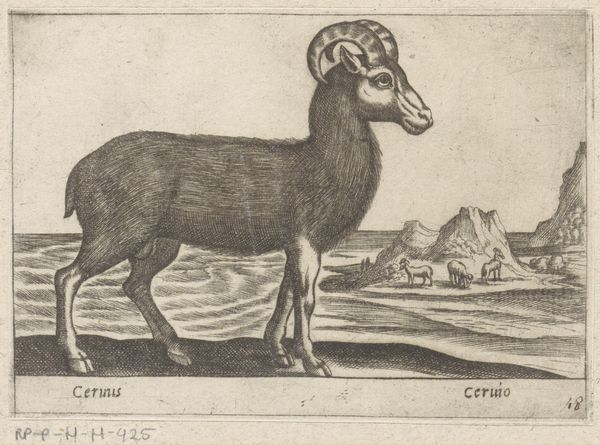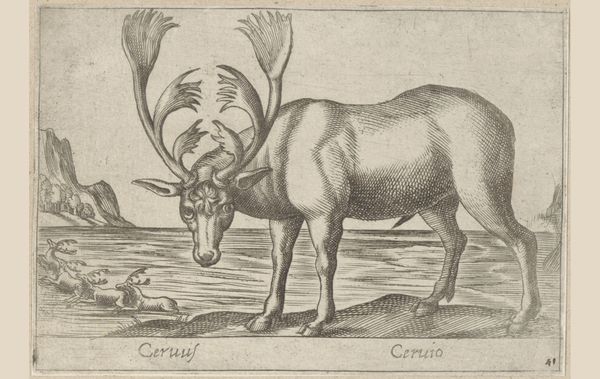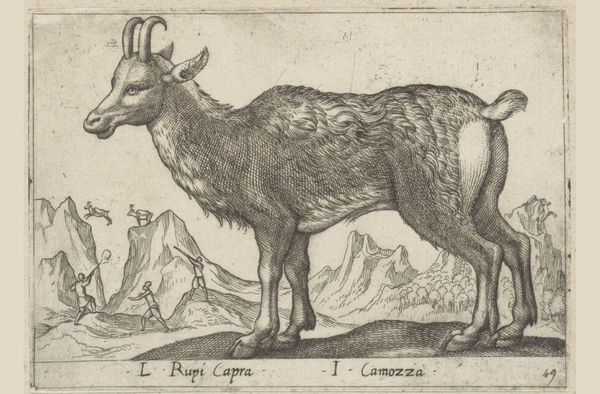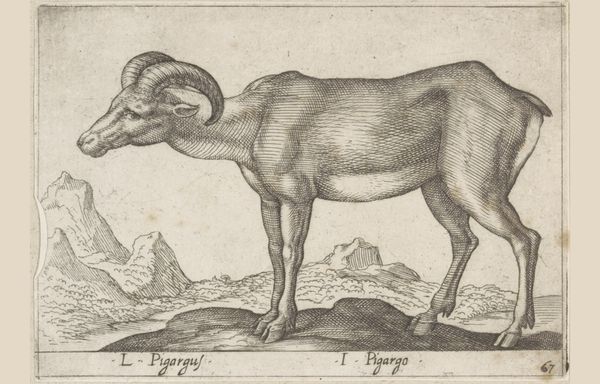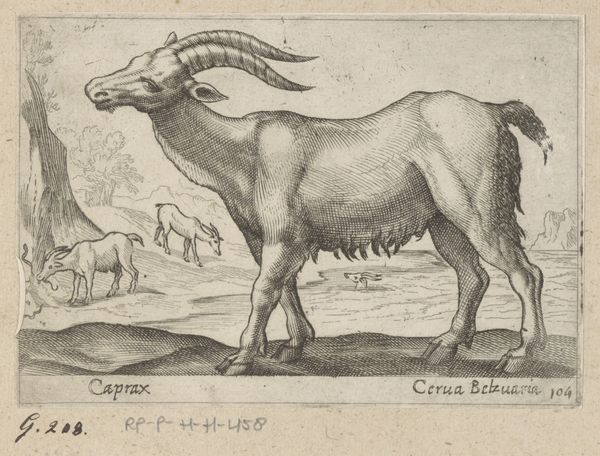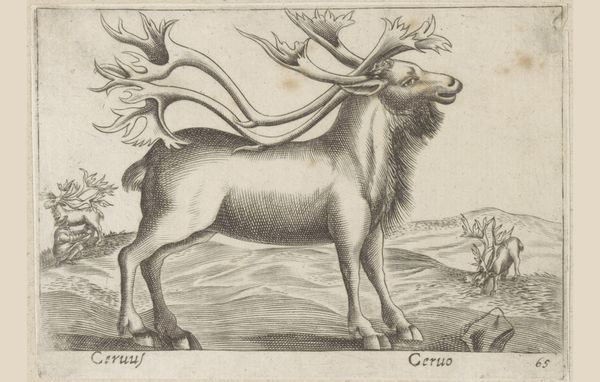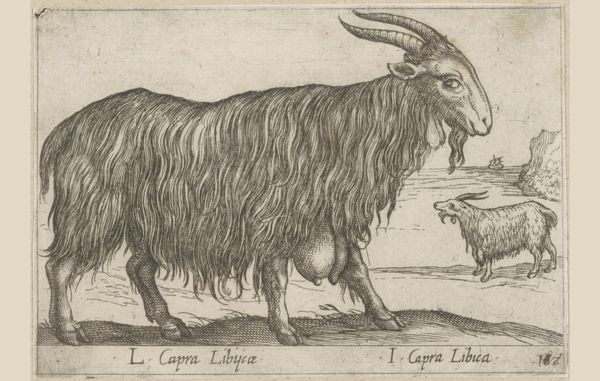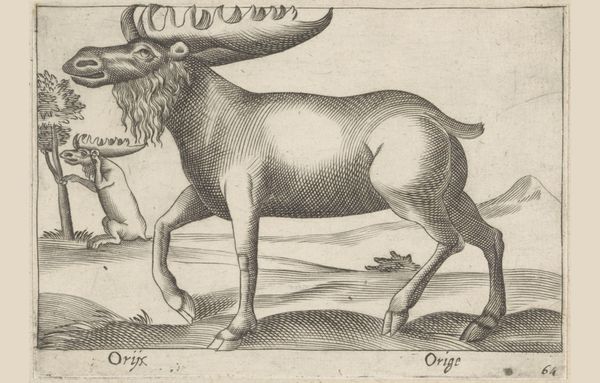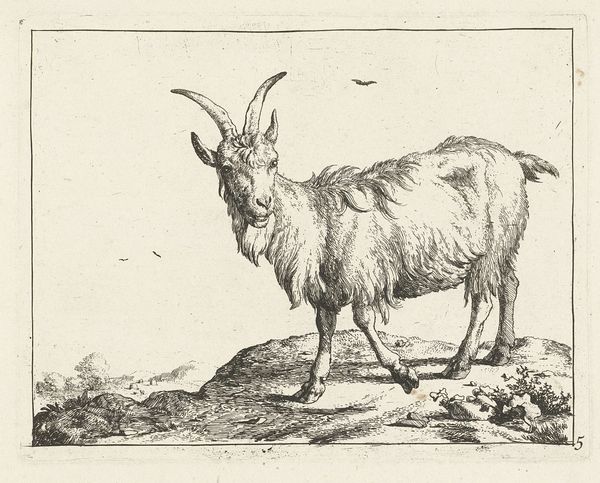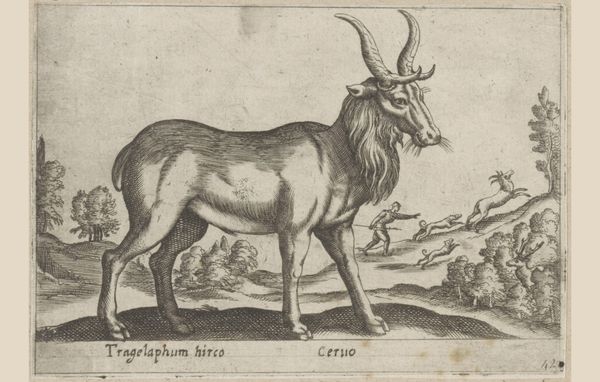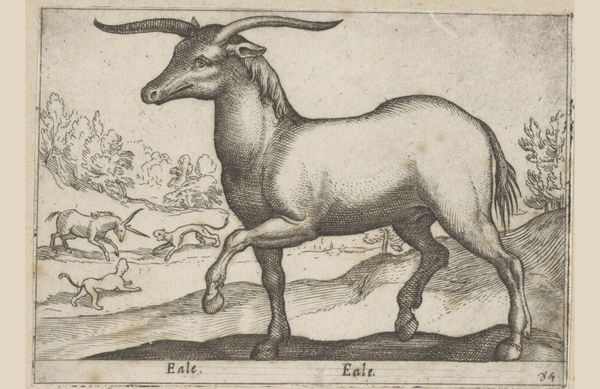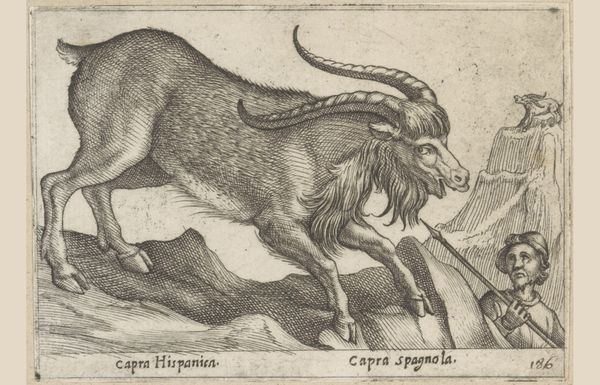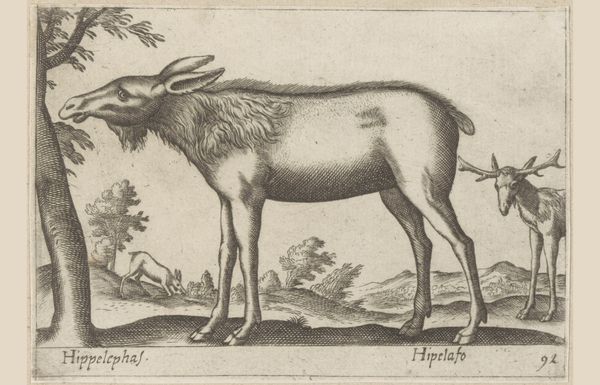
print, engraving
#
animal
# print
#
landscape
#
ancient-mediterranean
#
engraving
#
realism
Dimensions: height 95 mm, width 137 mm
Copyright: Rijks Museum: Open Domain
Curator: Looking at this engraving, it gives off an almost stoic quality, wouldn't you agree? Editor: Absolutely. There’s something strikingly solemn about this animal. It looks almost fossilized; as if the scene predates a known biblical past. What is this piece? Curator: This is an engraving entitled “Gems” by Antonio Tempesta, created before 1650. The engraving, currently held at the Rijksmuseum, features a Cretan goat rendered with an incredible level of detail, almost photorealistic if it weren’t for the etching style. Editor: The goat dominates the foreground, overshadowing the landscape, but is that level of meticulousness and dominating focus at the expense of some other meaning? Tempesta's choice situates the animal both as the central figure and within its environment. What is your reading of that compositional approach? Curator: For Tempesta, I suspect the symbolic weight rests heavily on the tradition of the 'noble animal', often chosen as an emblem of moral or aristocratic virtue. The detailed realism suggests scientific interest— a drive to accurately document the natural world. I notice it invites us to recognize ourselves, and our values reflected in this creature's steadfast presence. Editor: Fascinating. Considering this was produced before 1650, what historical lens might sharpen the dialogue? The shadow of colonialism looms large during this era. It is easy to frame any level of visual hyperrealism in a new age of discovery as imposing a kind of possessive, authoritative gaze upon other beings and land. Does this animal also belong to someone by means of its clear depiction? Curator: An astute observation, however, that may be applying contemporary readings to a period where these particular notions were not yet formed in the same way. Still, the detail does encourage an analytical view of nature, inviting both curiosity and potential subjugation. Editor: Subjugation as potential scientific analysis? Curator: Exactly. To know something thoroughly implies an implicit degree of control, especially with ancient landscapes beginning to suffer deforestation due to overgrazing by animals precisely like this one. Editor: So, beyond being a symbolic 'gem,' this animal is also situated on an ideological crossroads. Thanks for clarifying. I'm curious to keep examining Tempesta's relationship with progress, knowledge, and potential colonial impact. Curator: It presents an excellent counterpoint. I’ll carry forward the impact of my readings.
Comments
No comments
Be the first to comment and join the conversation on the ultimate creative platform.
